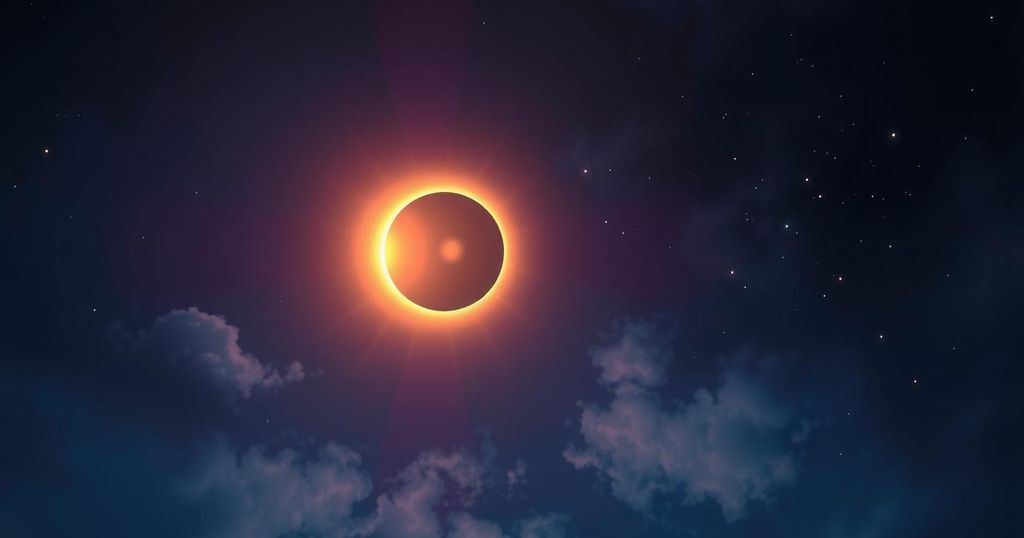Overview of the March 29, 2025 Solar Eclipse and Viewing Guidelines

The solar eclipse on March 29, 2025, will be a partial event, visible mostly in Eastern and Northern Canada and parts of the northeastern United States. India will not see the eclipse due to the Moon’s shadow not crossing its territory. Safety measures like using eclipse glasses are essential for viewers in observable areas.
The first solar eclipse of 2025 will occur on March 29. It will be a partial eclipse where the Sun, Moon, and Earth are not in perfect alignment, causing only a fraction of the Sun to be obscured. Eye protection is critical; viewers should use eclipse glasses or solar viewers instead of regular sunglasses, which do not provide adequate protection.
Unfortunately, India will not see the eclipse as the Moon’s shadow will not pass over the country. The most significant visibility of the eclipse will be in Eastern and Northern Canada, where up to 93.1% of the Sun will be obscured, and the northeastern United States, seeing over 85% coverage. Other regions like parts of Africa, Siberia, the Caribbean, and Europe will experience less pronounced partial eclipses.
The solar eclipse on March 29 is scheduled to start at 4:50 AM EDT (2:20 PM IST), reach its peak at 6:47 AM EDT, and end at roughly 8:43 AM EDT. For India, the event will begin at 2:20 PM IST and peak at 4:17 PM IST; however, due to geographical alignment, the eclipse will not be observable.
For safety during eclipse viewing, appropriate eye protection is essential. Viewers should wear eclipse glasses or use handheld solar viewers that comply with safety standard ISO 12312-2. Regular sunglasses are insufficient, and it is imperative to avoid looking at the Sun through optical devices, as this can cause severe eye injuries.
Indirect viewing methods such as using a pinhole projector can be safer alternatives for observing the eclipse without direct exposure. This technique allows the Sun’s image to be projected onto a surface, eliminating the risk of eye damage while observing the eclipse.
A partial solar eclipse occurs when the Moon partially obscures the Sun’s disc. This type of eclipse happens when the Sun, Moon, and Earth are not perfectly aligned, resulting in the Sun appearing to have a “bite” taken out of it for those situated in the penumbra, the area of partial shadow.
The March 29 solar eclipse will be predominantly a partial eclipse, with significant visibility in certain northern regions, while India will not witness this event due to the Moon’s shadow not crossing the subcontinent. Safety measures such as wearing specialized eclipse glasses and avoiding direct sunlight through optical devices are crucial. Understanding the nature of a partial solar eclipse can enhance the viewing experience for those in appropriate locations.
Original Source: www.hindustantimes.com






